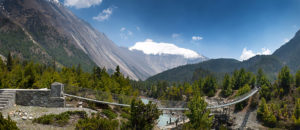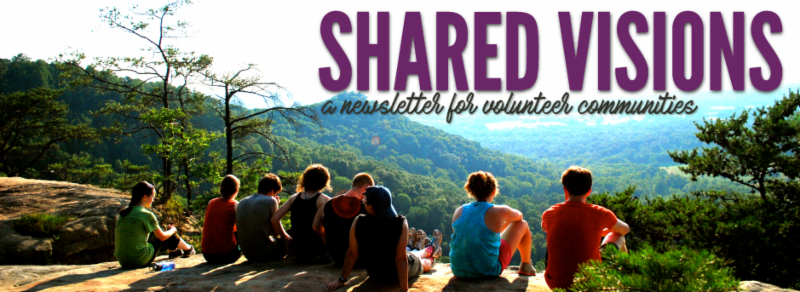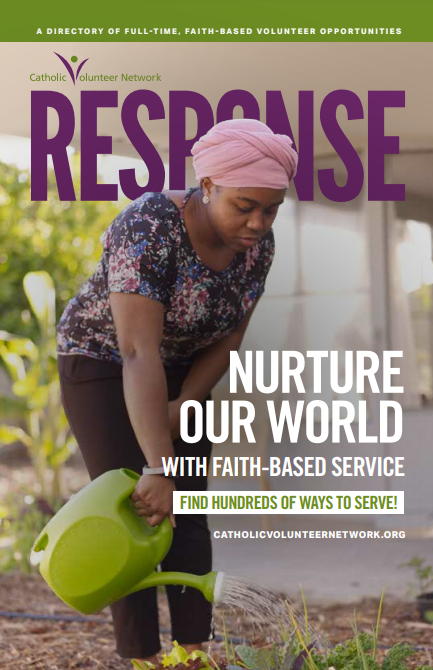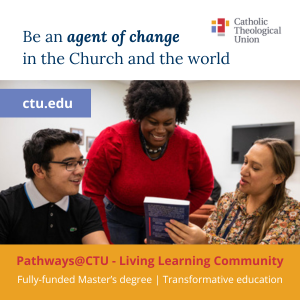by Tim Deveney, Director, Precious Blood Volunteers
In my mid-20s I lived and worked in Kathmandu, Nepal as a volunteer teacher. During breaks, I had opportunities to travel outside of the Kathmandu Valley and to take in the beauty of the people, cultures, jungles, hills, and mountains of Nepal. On one particular trip outside of Kathmandu, I went on a hike with some friends on a well-traveled trail that wound through a river valley that coursed between two 20,000 plus feet mountains. The scenery is quite breathtaking. At one point in the hike, we came to a suspension bridge that hung over a river at least 100 feet below.

Suspension bridge on Annapurna Circuit – most popular tourists’ trek in Himalayan mountain massif in Nepal.
I’ll admit that I have many fears, sometimes paralyzing so. Out of the many fears, I have the greatest of these is unenclosed heights. You can probably imagine that this would be a big problem for someone who has a strong fear of unenclosed heights to cross what looked like an unsteady bridge over raging waters. My choices were to be locked in my fear and be stuck out in the middle of nowhere by not going over the bridge or face this fear to get on with the journey.
As you probably expected I took the latter option since there was little choice in the matter! The adrenaline rush of overcoming this obstacle led to me having one of the most memorable days of my life. I was able to keep up the pace with Nepali mountain people who could walk with massive packs in flip-flops at a much faster clip than most in shape westerners. Facing my fear of heights helped me push through my fear of butchering the Nepali language and gave me the blessing of conversing with some Hindu pilgrims that I was sharing the trail with.
This past Advent and Christmas season I kept hearing the refrain that we should not be afraid. It’s a common refrain in both the Hebrew Scriptures and the New Testament. In Luke’s Gospel Mary is visited by an angel and told not to be afraid. A chapter later an angel of the Lord stood before shepherds to tell them to not be afraid. In Matthew’s Gospel, an angel appears to Joseph in a dream to tell him to not be afraid to take Mary as his wife, which would spare her embarrassment, provide a father for Jesus, and trust in what God is asking him to do. Similarly, in one of the post-Resurrection narratives, Mary Magdalene and the other Mary were greeted by an angel and told to not be afraid.
I understand completely why the individuals in each of these stories would have to be told not to be afraid. An angel appearing to me would be frightening! In each of these stories the people who choose to listen to the angels’ instructions to not be afraid have their own lives and the lives of others enriched and blessed by God’s presence in their midst.
There is a disconnect between the number of times that we hear and read about someone in the Gospel readings being told that they should not be afraid and the fear that is so prevalent in our world that we often succumb to. We are told to be afraid of immigrants, of crime, of losing our livelihoods, of crossing the dividing lines in our communities and relationships. We are afraid of going to the “other side of the tracks,” in Kansas City we are afraid of going to “the other side of Troost,” or in Chicago, we are afraid of going west of the Green Line. Our fears prevent us from seeing God’s beauty and grace as we fail to engage in encountering others as children of God. We must listen to the instruction of God’s messengers to not be afraid and have our lives enriched by our boldness and bravery.
For reflection:
• What are our fears?
• How do these fears keep us from something beautiful and new?
• How do these fears keep us from seeing the presence of God in others?
• What help do I need from others and from God to overcome my fears or the fears of our communities?
The Staying Connected newsletter is made possible through the partnership of Catholic Volunteer Network and Catholic Apostolate Center.



 Thousands of faith-based service opportunities can be at your fingertips with the RESPONSE. Download the latest edition today!
Thousands of faith-based service opportunities can be at your fingertips with the RESPONSE. Download the latest edition today!
